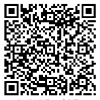HTML5 语义元素
语义元素介绍
HTML5标准增加很多新的语意元素,若按种类来区分,有页面结构上的、文本内容上的、表单里的等等。
而这里主要介绍页面结构上的新元素。
什么是语义元素
简单来讲,语义元素就是为元素(标签)赋予某种意义,元素的名称就是元素要表达的意思。
如<header>表示页眉、<footer>表示页脚。
特点:
①易于维护:使用语义元素将会有更清晰的页面结构信息,易于页面的后续维护。不需要再查看代码:找到div再找到具体的ClassName。
②无障碍性:有助于屏幕阅读器和其他辅助工具的读取。
③利于搜索引擎优化:搜索机器人在检查一些HTML5的语义元素后,可以收集其索引页面的信息。
HTML5 语义元素
<header>:定义网页或文章的头部区域。可包含logo、导航、搜索条等内容。
<article>
<header>
<h1>Internet Explorer 9</h1>
<p><time pubdate datetime="2011-03-15"></time></p>
</header>
<p>Windows Internet Explorer 9(缩写为 IE9 )是在2011年3月14日21:00发布的</p>
</article>
浏览器最低版本:IE 9、Chrome 5
使用说明:
①当用于标注网页的页眉时,可包含logo、导航、搜索条等信息。
②当用于标注内容的标题时,只有当标题还附带其他信息时才考虑用<header>,一般情况下用<h1>标注标题即可。
<main> : 定义网页中的主体内容。
浏览器最低版本:IE 不支持、Chrome 35
<footer>:定义网页或文章的尾部区域。可包含版权、备案等内容。
<footer>
<p>Posted by: Hege Refsnes</p>
<p><time pubdate datetime="2012-03-01"></time></p>
</footer>
浏览器最低版本:IE 9、Chrome 5
使用说明:
①作为网页的页脚时,通常包含网站版权、法律限制及链接等内容。
②作为文章的页脚时,通常包含作者相关信息。
<nav>:标注页面导航链接。包含多个超链接的区域。
<nav>
<a href="/html/">HTML</a> |
<a href="/css/">CSS</a> |
<a href="/js/">JavaScript</a> |
<a href="/jquery/">jQuery</a>
</nav>
浏览器最低版本:IE 9、Chrome 5
使用说明:
①一个页面可包含多个<nav>元素,如页面的导航和相关文章推荐等。
②<footer>区域里的联系信息、认证信息可不必包含在<nav>元素里。
<section>:通常标注为网页中的一个独立区域。
<section>
<h1>WWF</h1>
<p>The World Wide Fund for Nature (WWF) is....</p>
</section>
浏览器最低版本:IE 9、Chrome 5
使用说明:
可作为网页中的独立区域,如文章中的一小节。
<article>:完整、独立的内容块;里面可包含独立的<header>、<footer>等结构元素。如新闻、博客文章等独立的内容快(不包括评论或者作者简介)。
<article>
<h1>Internet Explorer 9</h1>
<p>Windows Internet Explorer 9(缩写为 IE9 )在2011年3月14日21:00 发布。</p>
</article>
浏览器最低版本:IE 9、Chrome 5
<aside>:定义周围主内容之外的内容块。如:注解。
<p>My family and I visited The Epcot center this summer.</p>
<aside>
<h4>Epcot Center</h4>
<p>The Epcot Center is a theme park in Disney World, Florida.</p>
</aside>
浏览器最低版本:IE 9、Chrome 5
<figure>:代表一段独立的内容, 经常与<figcaption>(表示标题)配合使用, 可用于文章中的图片、插图、表格、代码段等等。
浏览器最低版本:IE 9、Chrome 8
<figcaption>:定义 <figure> 元素的标题。
浏览器最低版本:IE 9、Chrome 8
示意图:


















一辆想出轨的无轨电车
光顾着看实例的文字了。。。。
8年前 添加回复 0